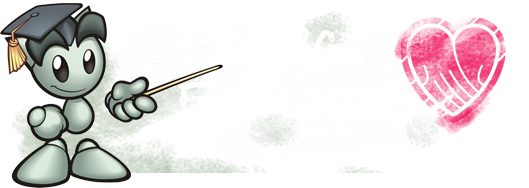Hello! My name is Arras and I've been sewing for about 12 years. I'm here today to tell you a little about sewing machines!
Prior to the invention of the sewing machine, the only way to sew was to do so by hand, and it was a very time-consuming process. In the early 1800's, a number of different inventors created machines that could do this same work considerably faster, although it wasn't until the middle of the century that they would become more widely available. The sewing machine will never completely replace hand sewing- some things are just better done by hand, or are not even possible on a machine, and many people simply love hand-stitching- but if you're going to be doing a lot of sewing, a sewing machine is an invaluable tool.
Here's the basic anatomy of a modern sewing machine:

The backstitch lever reverses the direction of the stitches, which allows you to "lock" your stitches into place. The hand wheel operates the machine, but gives you control so you can go one stitch at a time- good for doing precise corners, etc.

The "feed dogs" feed the fabric through the machine- the presser foot presses the fabric up against the feed dogs so they can do their job. Throat plates have handy seam allowance reference lines. Sometimes they're even labelled for your convenience (this one isn't).

Some things vary between machines (arrangement of thread guides, for instance), but the basic idea is the same for most machines.
Nowadays there is a huge number of different kinds of machines available, ranging from simple home machines to industrial grade versions, as well as specialized machines such as sergers, overlock machines, and embroidery machines. When buying a sewing machine, there are a few things to consider:
Mechanical vs. Electronic
The original sewing machines were mechanical, and today you can still buy what is essentially a more advanced version of the earliest machines. However, there are also a wide range of electronic machines on the market- these are the same thing, but have a small computer in them. This allows a much wider range of options and the ability to program the machine.

The modern machine on the right is electronic- you can see that there are significantly more stitch options than on my machine, pictured above (this lovely photo courtesy of 2InkyDolls-Stock Thanks!).
Top loading vs. front loading
This difference is largely a matter of preference- both work basically the same way! There are just some slight differences in how you thread them.
Here's a basic top-loading machine (Top-loader photos courtesy of PirateLotus-Stock. Thanks!)
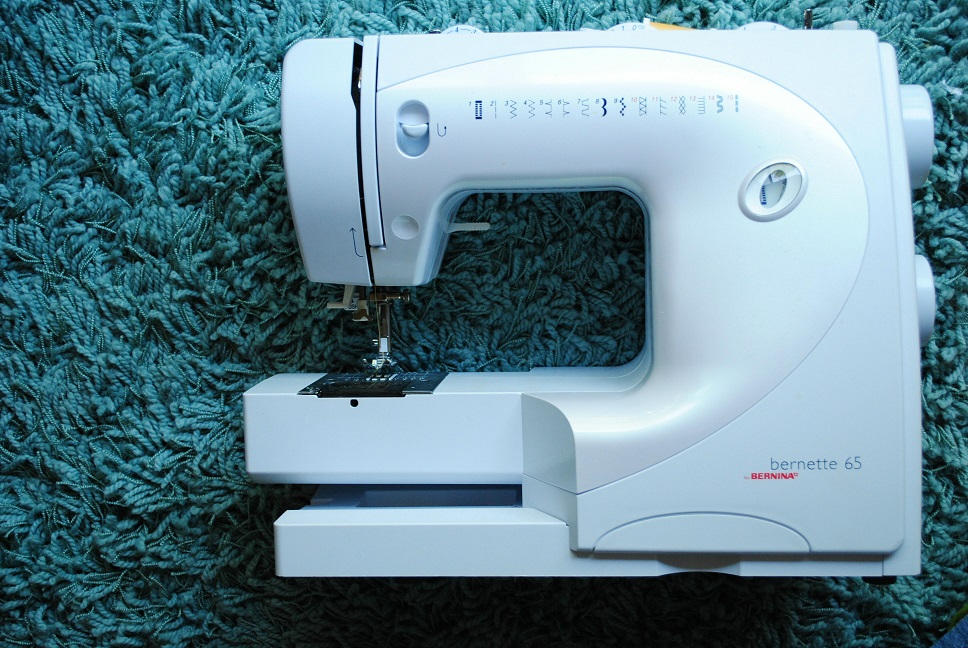
As you can see, the bobbin housing is on top instead of on the front. Also, where a front-loading machine has a separate bobbin casing, which has to be pulled out in order to load the bobbin:
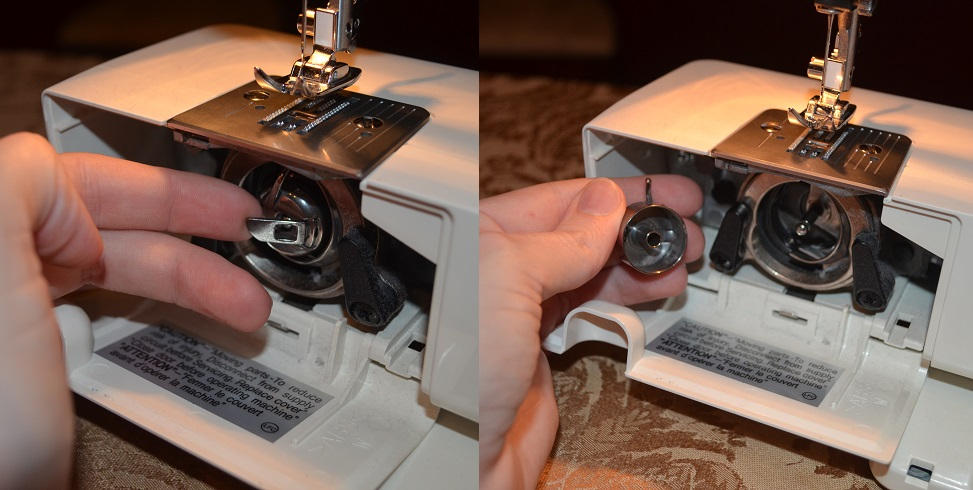
In the top-loader, the bobbin simply goes straight into the housing:
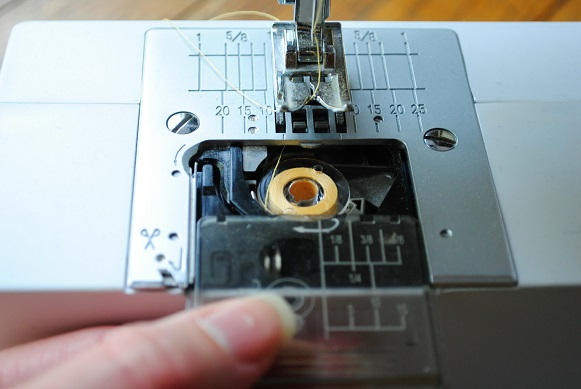
Specialized machines
There are a few different kinds of specialized machines and attachments- here's an overview of a few of the most common.
Embroidery machine- this kind of machine is computerized and programmable, and capable of doing a specialized range of decorative stitches. Often they come pre-programmed with a set of patterns and letters, and you can use those as-is, customize them, or add your own.
Serger- A machine that does overlocking stitches. Regular machines do a two-thread lockstitch, but sergers create an overlock stitch (flat or rolled, using 2, 3, or 4 threads) while cutting off excess fabric, creating a quick, neat edge. They can used to finish the edges of fabric (in lieu of hemming), prevent fraying, or can also be used to stitch together two pieces of fabric (although it is not as versatile for actual sewing as a sewing machine is- they do not handle curves well. Do not expect to be able to get a serger instead of a sewing machine- they are different things, and are not interchangeable).
 My serger- I love this thing
My serger- I love this thing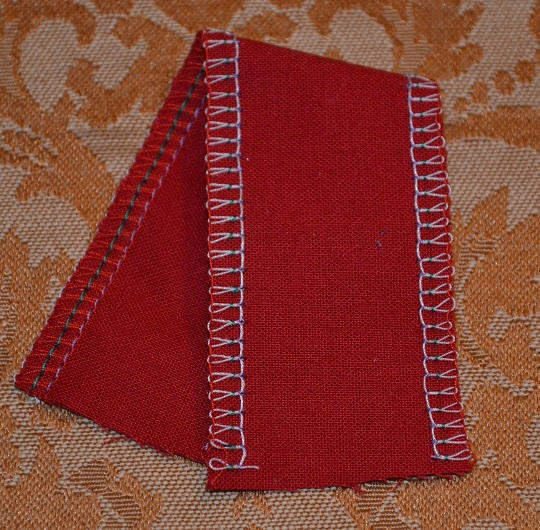
A simple, flat, four-thread overlocking stitch.
Overlock machine/overlocker- a cousin of the serger, it also does an overlocking stitch, but without cutting off the excess- allowing you to stitch two pieces together flat using an overlocking stitch instead of a lockstitch.
Quilting machine- quilting machines are essentially regular sewing machines, but usually have longer "arms" and a longer and/or wider base (or table attachment) to give you more room to work. They also tend to be more industrial standard- capable of handling both more delicate materials and thicker, heavier materials than a standard machine.
